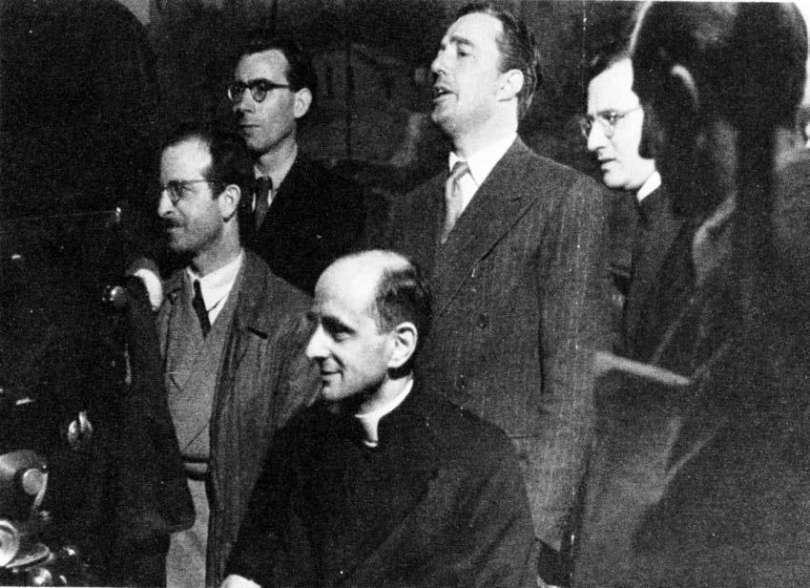
Montini and De Sica on the set
Photo: Study Center of the Paolo VI Institute of Concesio – Brescia
VATICAN CITY, January 27, 2022 / 2:00 PM (ACI Print) .-
It sounds like a fairy tale, yet it is a true story. The protagonists? Vittorio De Sica and Monsignor Giovan Battista Montini, the future Pope Paul VI. The story takes place in Rome, in the first days after the armistice of 8 September 1943.
The German troops had cleared all the film deposits: the reels for the film were nowhere to be found. Only the Holy See was spared from such looting. It was then that the Catholic cinematographic center he financed the producer Salvo D’Angelo to shoot a film in those very delicate days for Italian history: “La porta del cielo”, this is the title chosen. The film had to tell the pilgrimage of the so-called “white trains” to the Marian destination of the Sanctuary of Loreto. Men and women waiting for the miracle. If at first Exodus Pratelli, a director close to the regime, was chosen, the second and definitive choice fell on Vittorio De Sica, one of the fathers of neorealist cinema.
This risky undertaking was followed for the Holy See directly by the then Monsignor Montini: a protective wing of no small importance, given the situation in which Rome found itself in those days so tormented for the entire Italian nation. The regime had ordered the filmmakers Roberto Rossellini and Vittorio De Sica to go to Venice to deal with the fascist cinema of the newborn Northern Italian Social Republic, in Salò. De Sica himself was called by the Minister of Popular Culture, Fernando Mezzasoma who ordered the director to leave Rome to go to Venice. But the director retorted that he was already engaged in another production with the endorsement of the Holy See.
Shooting of the film began on March 1, 1944. The place chosen was the Basilica of San Paolo: Vatican territory, therefore extraterritorial. There the set with the train that transported the sick was set up. As always, the interior scenes of the famous Marian shrine were shot in the Roman basilica. It was precisely the extraterritoriality that was the guarantor of a certainly courageous operation: that of saving many Roman Jews from Nazi roundups. In fact, just a few evenings before filming began, German troops began to capture many Jews in the capital. More than 800 people were thus hired as extras: it was a way to protect them, making them live within the Vatican walls of the basilica of San Paolo. The Nazi-Fascist authorities were perfectly aware of what was going on inside, but they could not intervene. De Sica had also been informed by Monsignor Montini to pay attention because the fascist authorities knew perfectly well what was happening.
During the shooting the film ended, but De Sica – in order to save the “extras” – continued the making of the film. The imminent entry of the American troops in Rome was expected, which, victorious, liberated the capital on June 4, 1944. A memorable page in the history of cinema had been written. The great writer Ennio Flaiano, moved by the particular story of the making of the film, wrote in the weekly newspaper of the time, “Domenica” of May 6, 1945, these words:
“The door of heaven tells of miracles. The first miracle, it seems to me, is the same film, completed after seven months of work through incredible difficulties. You cannot read the production diary of this film without being amazed by the series of dramatic incidents that slowed its course. It will suffice to remember that last June 3, while the battle for Rome was being decided a few kilometers away, 800 people including extras and various technicians were under the director’s orders in the Basilica of San Paolo, intent on filming, showing a contempt for the war that only Archimedes would have shared. De Sica said that he had practically locked them, otherwise someone would have also, foolishly, been able to escape. And he laughed like a successful joke “.
A “successful joke” thanks to the ingenuity of De Sica and the indispensable contribution of Monsignor Montini.
Those Jews hidden by De Sica and Monsignor Montini doing extras for a film


